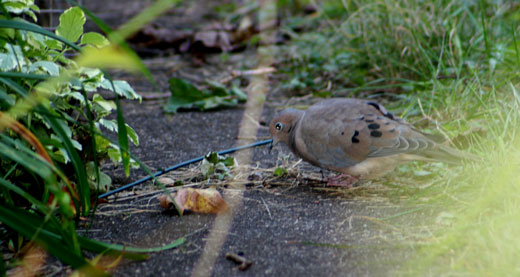
This is the Whirlpool Rapids Bridge on the Niagara River – I am revisiting photos I took from our trip last summer to Niagara Falls. The Whirlpool Bridge is about a mile from the falls.

The Whirlpool Bridge crosses the international border between the United States and Canada. You can learn more here about the Whirlpool Bridge and the earlier suspension bridge it replaced (the world’s first working railway suspension bridge).

Here’s a jet boat one can take on the Niagara River. We just stood high on the cliff above and took photos.
For more bridges, visit San Francisco Bay Daily Photo:


I took a piece of pomegranate and put it amongst my canning jars (and there’s a water bottle in the back). So it looks like a pomegranate seed among glass. I have a lot of canning jars because I’ve been pickling and more recently I sprouted some lentils.

My original First of the Month was the rhododendron shrub – above is rhododendron leaves in late October. Below are May, April and February.



For more First of the Month:


I bought a pomegranate a month ago for Rosh Hashana, and it was disappointing and too white inside, not quite ripe. The seeds were bitter. On a whim, I decided to try again on Friday and was pleased to find bright red pomegranate seeds inside the pomegranate.

Pomegranates have Vitamin C, anti-oxidants and are considered to be anti-inflammatory.

A fence in our yard – one can see the mums in the front of our house in the distance. The burning bush is right above the fence. Today it snowed – who knows how this fence with mums scene will look tomorrow!
For more Shots Straight Out of the Camera:


Last week I saw this brown mourning dove wander about in my yard.

Soon after he noticed that I was following him (her?) around with my camera, he settled on this high phone wire in the back of my yard.
Oh, by the way, did you know that Noah sent out a dove: “And he sent forth a dove from him, to see if the waters were abated from off the face of the ground.” But before the dove, he sent out a raven. I didn’t have any ravens showing up in my back yard.

My neighbor’s burning bush is quite spectacular – bright red at this time of year. Ah, another Biblical reference, except the burning bush doesn’t show up in the weekly Torah reading until winter time.

Here’s the how the dry oak leaf hydrangea flower looks – this photo was taken the same day as the red hydrangea leaf photos.


















